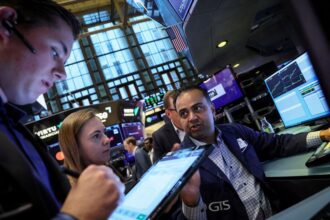Federal Reserve officials are expected to maintain interest rates steady at their meeting on Wednesday, September 20, 2023. This comes as the central bank aims to assess if the current borrowing costs are adequate to moderate the economy and manage inflation. However, investors’ attention is likely to shift towards the Fed’s comments on future financial policies.
Previously, the Federal Reserve had raised interest rates to a range of 5.25 to 5.5 percent, marking a 22-year high. This was aimed at curbing economic demand by making borrowing more costly for housing or business expansion, thereby limiting companies from increasing prices without risking customer loss, hence slowing price hikes.
In their last economic forecast in June, officials had projected a potential rate increase by the end of 2023. Despite signs of easing inflation, this prospect has been maintained throughout summer. However, key policymakers have shown less inclination towards another rate hike in recent weeks.
This week’s meeting will see Fed officials providing updated economic projections. These insights will reveal whether most policymakers still believe one final rate hike is necessary and how they interpret the current economic scenario. Interestingly, consumer spending has surpassed expectations even as inflation has slightly cooled down.
The revised forecasts alongside the Fed’s statement and a post-meeting news conference with Jerome H. Powell, the Fed’s chair, could offer the clearest indication yet of how close the central bank believes it is to concluding its series of rate increases and what the next steps in managing inflation might entail.
Even if the Fed signals that interest rates have peaked, officials have stated that they are likely to remain high for some time. Policymakers believe that maintaining high rates will continue to limit economic growth and gradually temper the economy.
Economic forecasts due for release after the meeting could provide clues about future interest rates. Projections for 2024, 2025 and newly added 2026 will be unveiled, which could indicate when officials plan to lower borrowing costs and what conditions would make them comfortable to do so.
However, the resilience of economic growth despite high rates may also influence the Fed’s economic forecasts. Factors such as leftover household savings from the pandemic, a strong labor market with solid wage growth, and government policies promoting infrastructure and green energy investment may be contributing to this resilience.
Despite a recent slowdown in inflation, policymakers may remain cautious about declaring victory over inflation in an economy that continues to grow robustly. If consumers continue to spend, companies might still be able to raise prices to increase or safeguard profits. In light of this, officials might believe that a more significant economic slowdown is required to achieve their 2 percent inflation target.
This article was generated with the support of AI and reviewed by an editor. For more information see our T&C.
Read the full article here








